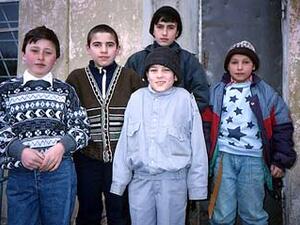Minsk meeting to conclude CIS Conference process
Minsk meeting to conclude CIS Conference process
The 1996 CIS Conference process - which was set up by UNHCR, IOM and OSCE to address the unique and highly complex mix of problems facing refugees, and various other types of displaced people in the CIS - will be brought to a conclusion at a meeting that opens tomorrow in the Belarus capital, Minsk, and continues through Friday.
The High Level Review Meeting has been arranged by the original three organizations involved with the CIS Conference process, along with the Council of Europe and the European Commission, and should be attended by all 12 CIS countries. UNDP and other development agencies will also be playing an important role, as the participants discuss the future course of action, including the economic development needed to help stabilize populations and integrate displaced people, returnees and other migrants.
In many ways the CIS Conference process, which was launched by a major conference here in Geneva on 30-31 May 1996, has been extremely successful. After the dissolution of the Soviet Union in 1991, the newly independent states which emerged were ill-prepared to cope with the complex range of displacement problems and issues concerning citizenship and potential statelessness that it left in its wake. At the time of the original conference, it was estimated that some 9 million people had moved within or between the CIS countries - mostly for involuntary reasons - since major cracks began to appear in the Soviet Union in 1989.
Since the 1996 Conference, all CIS states - with the exception of Uzbekistan - have acceded to the 1951 refugee Convention, and most of them have drawn up national asylum legislation. Most of the states have also passed comprehensive citizenship laws and signed the 1954 Statelessness Convention.
In addition to - and as a result of - the vital raft of legislation that has been put in place, some specific groups of people who had been victims of historical circumstances in the Soviet Union, such as the Crimean Tatars, have had their situations partially resolved, either by returning to their original home region or through being integrated in the countries to which they were originally displaced or forcibly relocated.
At end of the High Level Review Meeting, formal conclusions will be adopted, and a final report will subsequently be submitted to the UN General Assembly.
Despite the significant achievements since 1996, and the fact that the region did not experience the mass displacement feared in the early 1990s, the participants will also be discussing the many problems that continue to affect the CIS countries. These include significant levels of migration across the region, human trafficking, security concerns, unresolved conflicts and the fact that the largest group of asylum seekers arriving in central and western Europe today - namely Russians, most of whom are Chechens - are being produced within the CIS.


